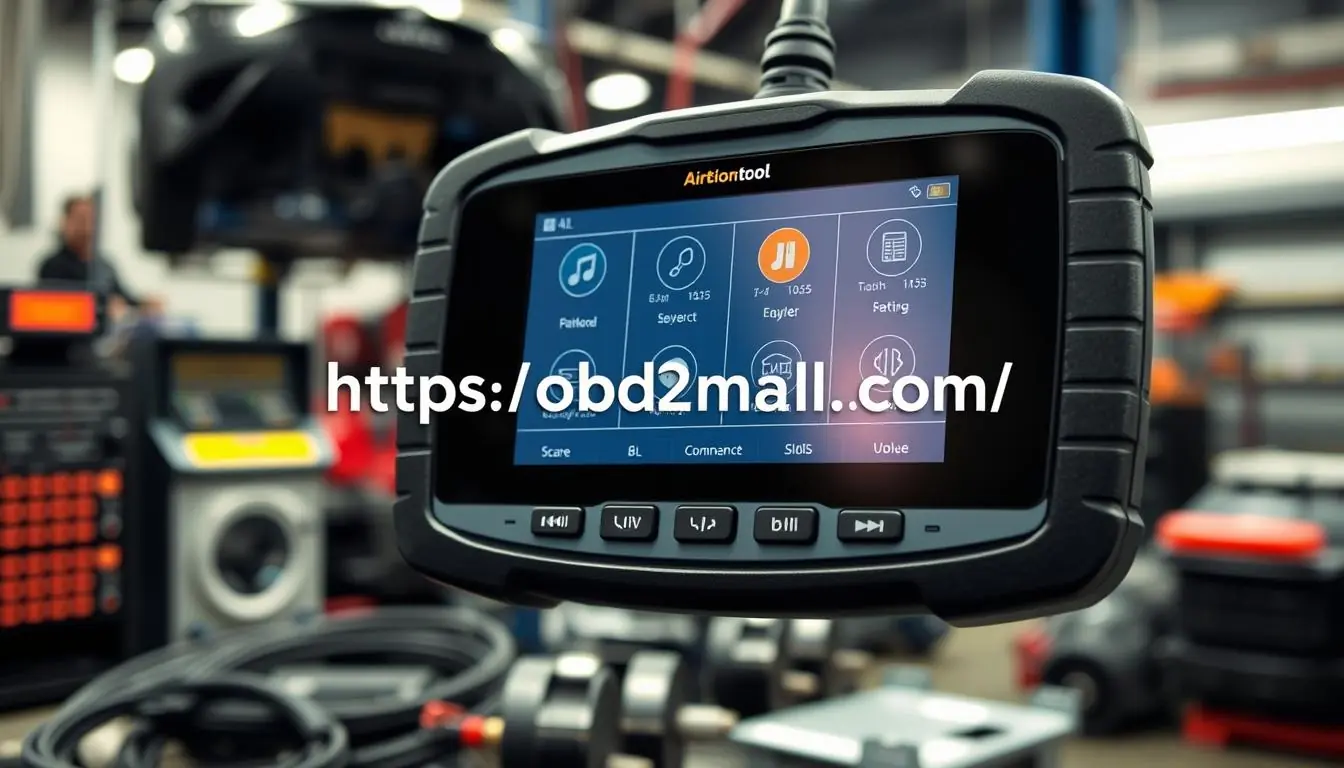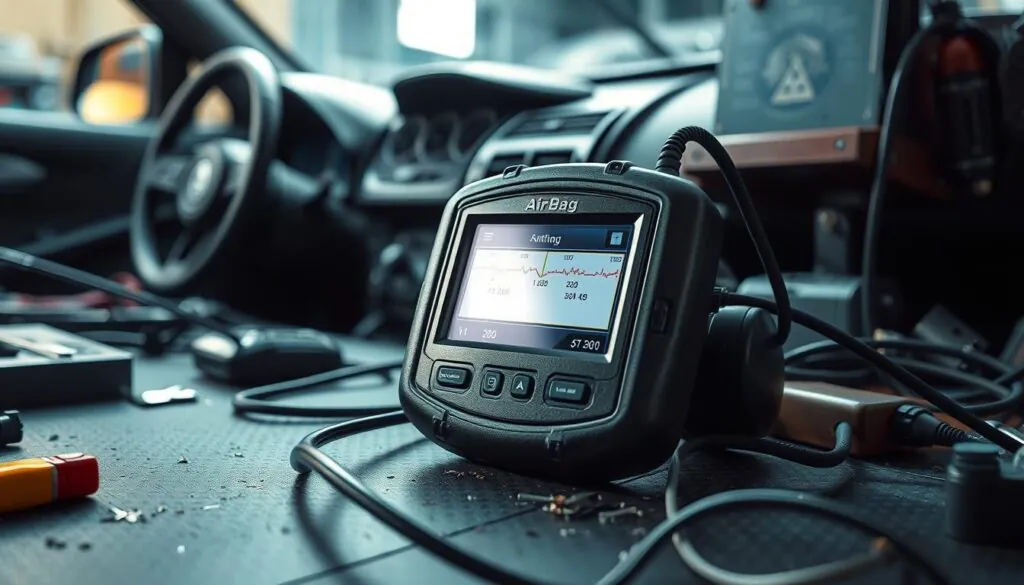Have you ever looked at that obnoxious airbag warning light and had absolutely no idea what to do? You’re not alone. As a matter of fact, 95% of mechanics use OBDII scanners when teasing out airbag problems and getting motorists back on the road securely. Whether you are a Saturday DIYer or autopro, this article is going to take you through the best tips to complete airbag diagnostic with your scan tool.
Choosing the Right OBD2 Scanner
Scanners aren’t all created equal. You should get a scanner with support for SRS diagnostics (air-bags). That means it can:
- Read and erase airbag error codes
- Access SRS modules
- Show live data from crash-sensors
Companies including Foxwell, Autel, and Bosch have models with SRS capability. Consider features and price points, and look for at least the following basics:
- SRS/airbag code reading
- Regular software updates
- Wide vehicle coverage
Tip: Take a look at user reviews to find out how the scanner performs with the make and model of your car.
Scanner Software Release Maintenance Keeping Your Scanner Current
Your scan tool needs updates – Just like your cell phone! Motor vehicle manufacturers tweak airbag system designs each year. If you’re old software is not up to date, your scanner could miss new error codes.
To update, it’s usually this easy:
- Using scanner with a PC or over Wi-Fi
- Downloading the latest firmware
- Following on-screen prompts
Do it every few months, or any time you find a new car on your to-repair list.
Decoding Airbag Error Codes
A code on a cryptic label, like B0012, can be a lot to take in. The scanners with pre loaded code library translate these into plain English. For example:
- B0012 :Passenger Frontal Deployment Loop What does this mean? B0012 Left B-Pillar Sensor Circuit High The passenger frontal deployment loop consists of 2 stage deployment loops.
- B0013: Left B-Pillar Sensor – Error Low
Some tools will even give you repair suggestions. It’s like an owners manual for your hands!
Staying Safe During Airbag Diagnostics
Airbags are pretty hard-hitting; use them wrong, and they can go off in your face. Scanner safety Always adhere to the scanner’s safety guidelines:
- Wear safety glasses and gloves
- Remove the battery before any major work
- Handle SRS connectors gently
- Make sure your clear codes only when your issue is fixed!
When to Know When to Bring in the Pros
Not every code is a DIY fix. If you’re hitting a wall (pardon the pun), such as internal module problems or gnarly wiring issues, it’s time to call in the professionals. Experienced, certified techicians use special tools and training to perform these difficult SRS repairs correctly.
Fixing Scan Tool Communication Issues
When your scanner and car refuse to communicate, try these steps:
| Troubleshooting Step | What to Do |
|---|---|
| Check Wiring and Connections | Make sure the scanner is securely connected. Look for damaged cables. |
| Test the OBDII Port | Use a different scanner and check to see if the port is responsive. |
| Update Scanner Firmware | Install the most recent firmware — it often corrects communication issues. |
| Confirm Compatibility | Ensure your scanner is compatible with your car’s make, model and year. |
Power Power: Easy charging on the go with included Li-on rechargable battery pack and convenient USB cable.
No battery, no diagnostics. Here’s how to prevent power issues:
| Scan Tool | Battery Life | Power Options | Backup Power |
|---|---|---|---|
| Foxwell NT809BT | Up to 5 hours (Li-ion) | 12V vehicle or USB | Built-in battery pack |
| ANCEL V6 Pro | Up to 8 hours | 12V vehicle or USB | Rechargeable battery |
Handling Erratic Readings
Unusual or sporadic information can delay your diagnosis. Check for:
- Bad signals from crash sensors themselves
- Loose or corroded wiring
- Electrical “static” from nearby electronics
Yield the shield wires, properly bond the car, and erase any old codes before re-scanning.
How the Pros Check Pins and Wires
Good connections are everything. Follow these steps:
- Carefully inspect SRS module connecting pins and terminals – these are low voltage circuits.
- Fix broken wires with professional SRS wire repair kit.
- For good contacts use dielectric grease (GM P/N 12345579).
Clear DTCs after repairing DTCs, then recheck. If codes return, go deeper.
| DTC Code | What It Means |
|---|---|
| B0012 | Left B-Pillar Sensor Circuit High |
| B0013 | Left B-Pillar Sensor Circuit Range/Performance (Circuit Low) |
| B0015 | Right B-Pillar Sensor Circuit High |
| B0016 | Right B-Pillar Sensor Circuit Low |
Using Pro Support and Internet Forums
Stuck on a head-scratcher? Tech support is available or you might join a community. You’ll find:
- Model-specific tips
- Firmware and calibration tricks
- Hands-on advice from fellow mechanics
Some scanners, such as the Foxwell NT716, focus on airbag (SRS) diagnostics, which you might want to check out if you need some extra power.
Keeping Up with the Latest in Airbag Technology
Airbag and SRS technology change quickly. To stay current:
- Opt for scanners that Wi-Fi or PC update capabilities
- Read industry blogs and magazines
- Go to Workshops about new diagnostic tools
And always recheck wiring and battery health — it’s the small things that catch you out.
The Effect of ADAS on Airbag Diagnostics
The advent of Advanced Driver Assistance Systems (ADAS) is a game-changer. A report by the AAA demonstrated that ADAS can reduce crashes by 40 percent, injuries by 37 percent and fatalities by 29 percent. 75% of North American cars will have ADAS within 10 years, so you must:
- Know how ADAS integrates with airbags
- Employ ADAS calibration-enabled scanners
- Train on new safety tech
How ADAS and Airbags Collaborate
Consider airbags your last line of defense as ADAS actively tracks the road. When a crash occurs, both systems have to sync up perfectly. Scan tools erase codes and reset modules so they are ready for whatever comes next.
Recalibrating ADAS After Airbag Deployment
If an airbag deploys, you will need to recalibrate the ADAS sensors — cameras, radar and LiDAR — so these elements provide accurate readings. If you are willing to spend the money, Autel and Bosch make straightforward calibration fixtures that plug in directly to your scan tool.
Wrapping It All Up: Your Plan for Airbag Expertise
And with the proper OBD2 scanner, current software and safe work habits, you can address almost any airbag complaint. Mix in ADAS and you are ingredients that could well be the future of vehicle safety. Keep learning, keep your tools sharp and don’t be afraid to lean on experts when you need to. You’ve got this!




